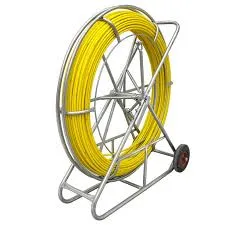
-
 Afrikaans
Afrikaans -
 Albanian
Albanian -
 Amharic
Amharic -
 Arabic
Arabic -
 Armenian
Armenian -
 Azerbaijani
Azerbaijani -
 Basque
Basque -
 Belarusian
Belarusian -
 Bengali
Bengali -
 Bosnian
Bosnian -
 Bulgarian
Bulgarian -
 Catalan
Catalan -
 Cebuano
Cebuano -
 Corsican
Corsican -
 Croatian
Croatian -
 Czech
Czech -
 Danish
Danish -
 Dutch
Dutch -
 English
English -
 Esperanto
Esperanto -
 Estonian
Estonian -
 Finnish
Finnish -
 French
French -
 Frisian
Frisian -
 Galician
Galician -
 Georgian
Georgian -
 German
German -
 Greek
Greek -
 Gujarati
Gujarati -
 Haitian Creole
Haitian Creole -
 hausa
hausa -
 hawaiian
hawaiian -
 Hebrew
Hebrew -
 Hindi
Hindi -
 Miao
Miao -
 Hungarian
Hungarian -
 Icelandic
Icelandic -
 igbo
igbo -
 Indonesian
Indonesian -
 irish
irish -
 Italian
Italian -
 Japanese
Japanese -
 Javanese
Javanese -
 Kannada
Kannada -
 kazakh
kazakh -
 Khmer
Khmer -
 Rwandese
Rwandese -
 Korean
Korean -
 Kurdish
Kurdish -
 Kyrgyz
Kyrgyz -
 Lao
Lao -
 Latin
Latin -
 Latvian
Latvian -
 Lithuanian
Lithuanian -
 Luxembourgish
Luxembourgish -
 Macedonian
Macedonian -
 Malgashi
Malgashi -
 Malay
Malay -
 Malayalam
Malayalam -
 Maltese
Maltese -
 Maori
Maori -
 Marathi
Marathi -
 Mongolian
Mongolian -
 Myanmar
Myanmar -
 Nepali
Nepali -
 Norwegian
Norwegian -
 Norwegian
Norwegian -
 Occitan
Occitan -
 Pashto
Pashto -
 Persian
Persian -
 Polish
Polish -
 Portuguese
Portuguese -
 Punjabi
Punjabi -
 Romanian
Romanian -
 Russian
Russian -
 Samoan
Samoan -
 Scottish Gaelic
Scottish Gaelic -
 Serbian
Serbian -
 Sesotho
Sesotho -
 Shona
Shona -
 Sindhi
Sindhi -
 Sinhala
Sinhala -
 Slovak
Slovak -
 Slovenian
Slovenian -
 Somali
Somali -
 Spanish
Spanish -
 Sundanese
Sundanese -
 Swahili
Swahili -
 Swedish
Swedish -
 Tagalog
Tagalog -
 Tajik
Tajik -
 Tamil
Tamil -
 Tatar
Tatar -
 Telugu
Telugu -
 Thai
Thai -
 Turkish
Turkish -
 Turkmen
Turkmen -
 Ukrainian
Ukrainian -
 Urdu
Urdu -
 Uighur
Uighur -
 Uzbek
Uzbek -
 Vietnamese
Vietnamese -
 Welsh
Welsh -
 Bantu
Bantu -
 Yiddish
Yiddish -
 Yoruba
Yoruba -
 Zulu
Zulu


Nov . 02, 2024 02:23 Back to list
grounding rod for earthing
Grounding Rod for Earthing An Essential Component for Electrical Safety
In our increasingly electrified world, ensuring safety in electrical installations is of paramount importance. One essential element that plays a crucial role in this safety framework is the grounding rod, commonly referred to as an earthing rod. Grounding rods serve as vital components in establishing a reliable earthing system, which protects both people and equipment from electrical faults.
Grounding Rod for Earthing An Essential Component for Electrical Safety
The installation of a grounding rod involves several steps. Firstly, the location is selected, often in an area that is moist and free of obstructions for optimal conductivity. The rod is then driven vertically into the ground, typically to a depth of eight to ten feet, or deeper if the soil conditions necessitate it. The grounding system is then connected to the electrical panel using a grounding conductor, ensuring a direct link between the electrical system and the grounding rod.
grounding rod for earthing

Proper installation and maintenance of grounding rods are critical. It is recommended to regularly inspect the grounding system for corrosion, loose connections, or any physical damage. Over time, soil conditions can change, affecting conductivity, so periodic testing of the grounding resistance is advisable. The National Electrical Code (NEC) provides guidelines on grounding, which should be followed to ensure compliance and safety.
The importance of grounding rods extends beyond individual safety; they also play a significant role in the functionality and longevity of electrical systems. Equipment that is properly grounded experiences fewer operational issues, and grounding protects against surges that can lead to costly repairs or replacements.
In conclusion, grounding rods are indispensable for creating a safe electrical environment. They safeguard both human life and electrical systems by channeling dangerous currents safely into the ground. Ensuring that grounding rods are correctly installed, regularly inspected, and maintained with care is fundamental for any property, whether residential or commercial. Investing in a proper grounding system is not just a regulatory requirement; it is a crucial step towards ensuring electrical safety for all.
Latest news
What Are Construction Tools and How Are They Used?
NewsJul.11,2025
Professional-Grade Duct Rodding Tools for Superior Cable Installation
NewsJul.11,2025
Enhancing Safety and Efficiency with Modern Hot Stick Solutions
NewsJul.11,2025
Empowering Cable Installation with Advanced Rodder Solutions
NewsJul.11,2025
Elevate Your Cable Installation Projects with Cable Pulling Tools
NewsJul.11,2025
Efficient Cable Handling Solutions: Cable Rollers for Sale
NewsJul.11,2025











